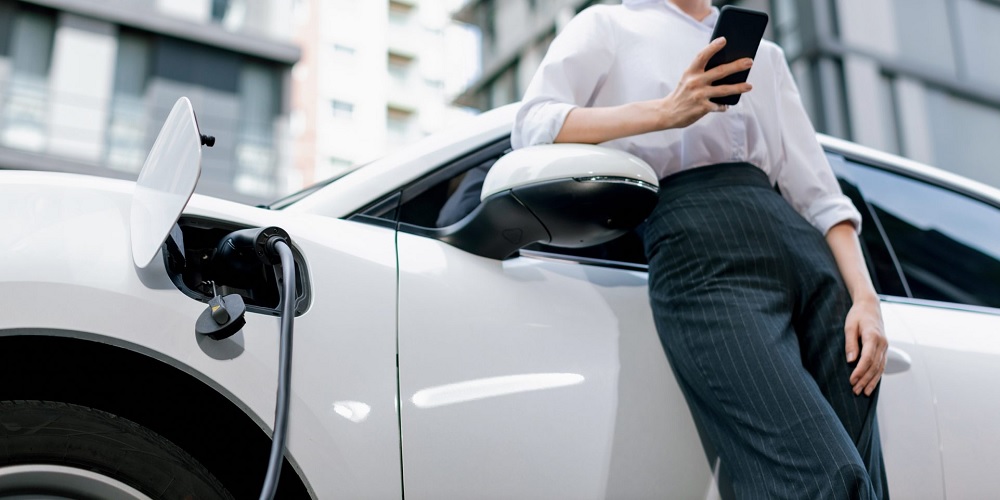Transform government fleets to zero emission with public charging sites

More than 1,000 cities worldwide have pledged themselves to the UN’s zero-emissions (ZE) race. Many of these include municipalities in North America, including major American and Canadian metros.
Fleet managers are increasingly interested in joining the ZE transition by using electric vehicles (EVs) to reduce their carbon footprints. If you’re one of these forward-thinking leaders looking to transition your government fleet, this guide can help you better understand the power of using public charging sites to get there.
Five benefits of shifting to zero emissions
Shifting your organization to zero-emissions infrastructure brings a host of benefits to your fleet, agency, and public audience. The five most impactful of these include:
- Effective sustainability: Going green with EVs can be a powerful way to increase the mileage, lifespan, and cost-effectiveness of your public fleet.
- Fewer expected costs: You may spend less of your budget on traditional fuel and more on greening initiatives that play into your organization’s big picture.
- Minimized resource reliance: By relying on traditional fuels and suppliers less frequently, you can free up certain commitments for other critical tasks.
- Better air quality: The less traditional fuel you burn for your fleet, the better your local air quality may be for people and their pets.
- Limited environmental pollution: Alternative fuels produce less waste (and therefore, less pollution) in the spaces where people live, work, and play.
Let’s examine how public charging sites can help you achieve a ZE future.
The different types of public charging sites
Public charging stations are a powerful resource for governments looking to reduce their fleet emissions. Understanding how they work is relatively simple—you just need to implement the correct number for optimal outcomes.
First, you need to select the right type of charging station. There are three different levels:
- Level 1: Sometimes referred to as a standard wall outlet (120 volts), Level 1 chargers offer up to 5 miles of range per hour charged. These are best for overnight charging, low mileage driving, and emergencies when other charging sites are down or undergoing maintenance.
- Level 2: Many people refer to Level 2 chargers as dryer plugs (they’re the same as a 240-volt outlet). Plugging in your EV provides up to 25 miles of range per hour charged, which is best for quicker charges in resting spaces (restaurants, hotels, etc.).
- Level 3: Also called DC fast charging outlets, these 200- to 1,000-volt plugs are the fastest in the industry. You can get up to 250 miles of range per hour charged, which is an unbelievable speed for most EV owners. Since DC chargers are expensive to install, though, they’re best for dispersion in busy, packed, or short-term waiting areas (like highway rest areas or gas stations).
Apart from choosing the right mix of charging station types, you need to select the type of charging site network desired. There are two options: networked and non-networked.
Networked charging sites are connected to your larger management system via interconnected public chargers. In other words, they have access to the internet. Common benefits include:
- Automatically monitoring electricity output and frequency
- Identifying users and automatically invoicing their account
- Appearing on charging station maps and offering easier maintenance
Non-networked charging stations are standalone machines that are not connected to any unifying system (which means they don’t have access to the internet). The benefits include:
- Cheaper upfront costs
- Simpler monitoring of total electricity use by unit
- Easier public charging setup
By this point in the planning process, you should be ready to design an EV charging plan for your government fleet. You just need to consider the size, capacity, and availability of your resources before breaking ground on your charging site.
First, consider partnering with advisors and mentors to help you make informed decisions. Then, look to local utility companies and energy providers to see how much power you can allocate to charging infrastructure.
Practical resources for public charging initiatives
Installing public charging stations is one of the most effective ways to help your government fleet reach its ZE goals. However, you must be careful to select the right industry partners to support your journey with as few impediments as possible.
Suggested partners for government fleets include:
- Electrification Coalition: Designed to help municipalities prepare for the future with policy reports, case studies, and more
- Climate Mayors: A bipartisan network of 750+ mayors looking to green their cities more effectively
- Sourcewell: Providing competitively sourced cooperative contracts to public fleet managers as they shift toward the EV future
You can learn more about Sourcewell’s cooperative contracts by registering your organization for free.
Sourcewell awards contracts in electric vehicle supply equipment. These contracts assure that government entities can take the first step in creating the infrastructure to support green initiatives. See how Sourcewell can save you time and money while getting the fleet equipment that you need already on contract.


